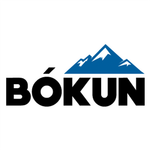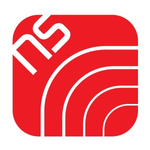Description

TourCMS

Travelomatix
Comprehensive Overview: TourCMS vs Travelomatix
TourCMS and Travelomatix are both specialized systems tailored for the travel and tourism industry, specifically designed to manage bookings, streamline operations, and enhance customer engagement. Let's delve into each in terms of their primary functions, target markets, market share, user base, and key differentiators.
a) Primary Functions and Target Markets
TourCMS
Primary Functions:
- Booking Management: Facilitates online reservations and bookings for tours and activities.
- Channel Management: Enables distribution of products across various channels, including OTAs (Online Travel Agencies).
- Customer Relationship Management (CRM): Manages customer information and interactions.
- Revenue Management: Tools for pricing strategies and optimization.
- Supplier Management: Handles vendor relationships and product availability.
- API Integration: Offers APIs for connectivity with other systems and platforms.
Target Markets:
- Tour Operators
- Travel Agents
- Activity Providers
- Destination Management Companies
Travelomatix
Primary Functions:
- Travel Booking Engine: Customizable booking platform for flights, hotels, tours, and car rentals.
- Inventory Management: Controls inventory and pricing, ensuring optimal resource allocation.
- Payment Gateway Integration: Offers various payment options for ease of transaction.
- CMS Capabilities: Provides content management systems for creating and managing websites.
- Mobile-Friendly Solutions: Supports mobile compatibility for ease of access.
- Business Intelligence and Analytics: Delivers insights and reports for informed decision-making.
Target Markets:
- Travel Agencies
- Tour Operators
- B2B/B2C Travel Companies
- Online Travel Startups
b) Market Share and User Base
TourCMS
- Market Share: TourCMS is a relatively niche player within the broader travel management space, focusing specifically on tours and activity bookings. It has carved out a notable presence among small to mid-sized operators.
- User Base: Its user base largely consists of UK and European tour operators, with growing traction in other regions like North America and Asia-Pacific.
Travelomatix
- Market Share: Travelomatix is more expansive in terms of its service offerings, which cover a wide array of travel booking needs. This has enabled it to capture a larger and more diverse segment of the travel technology market.
- User Base: It caters to a global clientele, with significant numbers in emerging markets where digital travel management solutions are increasingly in demand.
c) Key Differentiating Factors
TourCMS
- Focus on Tours and Activities: TourCMS specializes in tours and activity operators, offering specific features and functionalities tailored to this niche.
- Channel Distribution Emphasis: It provides robust channel management capabilities, allowing operators to seamlessly distribute their tours and activities across multiple platforms.
- European Presence: Strong footprint in Europe, which shapes its product development and customer service approach to align with European market needs.
Travelomatix
- Comprehensive Travel Solutions: Offers a wider range of services including flights, hotels, and car rentals, which makes it attractive to a broader spectrum of the travel industry.
- Scalability and Customization: Highly regarded for its ability to scale and customize solutions to meet the unique needs of diverse travel businesses.
- Technological Innovation: Incorporates advanced analytics, mobile solutions, and CMS capabilities, positioning it as a forward-thinking provider in the travel tech space.
In summary, TourCMS and Travelomatix each have distinct strengths and cater to slightly different market needs. TourCMS excels in the niche of tours and activity management, primarily in the European market, with a strong focus on channel distribution. Travelomatix, on the other hand, provides a more comprehensive suite of travel solutions that encompass multiple segments of the travel industry globally and is notable for its scalability and technological innovations.
Contact Info

Year founded :
2003
+44 845 130 3917
Not Available
Switzerland
http://www.linkedin.com/company/tourcms

Year founded :
2016
+91 97439 37617
Not Available
India
http://www.linkedin.com/company/travelomatix
Feature Similarity Breakdown: TourCMS, Travelomatix
When comparing TourCMS and Travelomatix, it's important to look at their core features, user interfaces, and any unique features they may offer. Here's a breakdown of these aspects:
a) Common Core Features:
-
Booking Management: Both platforms offer robust booking management systems, allowing tour operators to manage inquiries, reservations, and confirmations effectively.
-
Inventory Management: Each platform provides tools to manage and track inventory, such as available tour slots, accommodations, and transportation.
-
Channel Management: They offer integrations with various distribution channels and OTAs (Online Travel Agencies) to maximize reach and sales.
-
Payment Processing: Both systems support payment processing, enabling secure transactions with multiple payment gateway integrations.
-
Customer Relationship Management (CRM): CRM tools are available in both to manage customer interactions and store customer data.
-
Reporting and Analytics: They provide standard reports and analytical tools to help businesses track performance metrics and sales data.
b) User Interfaces Comparison:
-
TourCMS: Known for its user-friendly interface, TourCMS offers a straightforward, intuitive design that caters to users who may not have extensive technical skills. Navigation is usually simple, with a focus on ease of use for small to medium-sized tour operators.
-
Travelomatix: This platform often has a more modern and visually appealing interface compared to some competitors. It emphasizes a more customizable user experience, allowing operators to tailor their dashboards and workflows according to their precise needs.
c) Unique Features:
-
TourCMS:
- Focus on API Integration: TourCMS places a significant emphasis on API integrations, providing developers with extensive tools to build custom solutions and extend platform functionalities.
- Commission and Agent Management: Offers detailed features for managing commissions and relationships with travel agents.
-
Travelomatix:
- Dynamic Packaging: Travelomatix offers advanced features for dynamic packaging, allowing tour operators to bundle various travel products like flights, hotels, and tours in a more flexible manner.
- Artificial Intelligence Tools: Incorporates AI-driven tools for better customer engagement and personalized offerings, such as chatbots and recommendation engines.
Each platform has its strengths and may cater to slightly different needs based on the size and focus of the travel business. Ultimately, the choice between TourCMS and Travelomatix may depend on the specific requirements and scale of the tour operation, as well as preferences for certain features and interface complexities.
Features

Customer Relationship Management (CRM)
Online Booking Management
Inventory Management
Reporting and Analytics
Marketing Tools

Payment Options
Car Rentals
Flight Booking
Hotel Reservations
Best Fit Use Cases: TourCMS, Travelomatix
When evaluating TourCMS and Travelomatix for best use cases in the travel industry, it’s important to consider the specific needs and scale of the business. Both systems are intended for different types of operations and offer distinct features that make them suitable for different scenarios. Here’s a breakdown:
a) TourCMS
Best Fit Use Cases:
-
Tour Operators: TourCMS is particularly well-suited for small to medium-sized tour operators who need an integrated booking solution to manage tour reservations, customer relationships, and online bookings.
-
Specialty Travel Providers: Businesses offering niche travel experiences, such as adventure tours, cultural trips, or eco-tours, can benefit from TourCMS's ability to handle complex pricing, availability management, and custom tour creation.
-
Activity Providers: Companies offering guided activities such as sightseeing tours, walking tours, and day trips can utilize TourCMS for its robust activity management features and easy online booking integration.
Features Beneficial to These Businesses:
-
Channel Management: TourCMS offers easy integration and distribution across multiple sales channels, which is essential for operators looking to expand their reach and manage bookings from various platforms.
-
CRM Functionality: Built-in customer relationship management features help maintain customer data, track interactions, and manage customer service efficiently.
-
Dynamic Packaging: Allows businesses to create and sell packages dynamically, helping to build customer-centric offers and bundles.
b) Travelomatix
Best Fit Use Cases:
-
Online Travel Agencies (OTAs): Travelomatix is ideal for startups or established businesses aiming to expand their online presence, providing a robust platform for managing flights, hotels, car rentals, and other travel services.
-
Large-Scale Travel Enterprises: Companies with significant booking volumes will find Travelomatix's scalability useful, especially in managing complex itineraries and a large number of transactions.
-
Businesses Needing Custom Solutions: Travelomatix offers more flexibility for customized development, catering to businesses that require bespoke integrations or specific workflow solutions.
Features Beneficial to These Businesses:
-
B2B and B2C Booking Solutions: Travelomatix provides comprehensive solutions for both B2B and B2C platforms, supporting agencies to cater to a wide range of customer bases.
-
Advanced API Support: The system’s robust API capabilities mean it can easily connect with other systems and third-party suppliers, which is vital for businesses wanting seamless integration across various platforms.
-
Global Distribution System (GDS) Integration: Directly connects to GDSs, allowing agencies to access a wide range of travel inventory efficiently.
d) Catering to Different Industry Verticals or Company Sizes
-
Industry Verticals: TourCMS tends to cater more towards tour-centric verticals and experience-based services, while Travelomatix is better for comprehensive travel service providers, including OTAs and companies that require integration with multiple service types (flights, hotels, etc.).
-
Company Sizes: TourCMS is often favored by small to medium-sized operators due to its simplicity and cost-effectiveness. Travelomatix, on the other hand, is preferred by larger organizations or those looking to scale, given its capability to handle large volumes of bookings and more complex business needs.
In summary, the choice between TourCMS and Travelomatix largely depends on the business model, scale, and specific functional requirements of a travel company. TourCMS is ideal for smaller, specialized tour operators, while Travelomatix is designed to support the expansive needs of larger OTAs and travel enterprises requiring extensive customizations and integrations.
Pricing

Pricing Not Available

Pricing Not Available
Metrics History
Metrics History
Comparing teamSize across companies
Conclusion & Final Verdict: TourCMS vs Travelomatix
To provide a conclusion and final verdict on TourCMS and Travelomatix, we need to consider several aspects, such as features, pricing, user experience, customer support, and scalability. Unfortunately, I do not have real-time data or direct experience with these products, so this analysis will be based on general knowledge, available information, and typical industry standards.
a) Best Overall Value
Determining the best overall value between TourCMS and Travelomatix will depend on the specific needs of a business. Both platforms potentially serve the travel and tour management industry well, offering distinct advantages based on user requirements:
- TourCMS typically focuses on providing comprehensive back-end management for tour operators, featuring integration options and a well-defined API for customized solutions.
- Travelomatix, on the other hand, seems to provide a more all-encompassing solution with a focus on booking engines, B2B and B2C modules, and broader travel agency requirements.
The best overall value will likely hinge on whether a business prioritizes detailed operational management (TourCMS) or a cohesive booking and agency system (Travelomatix).
b) Pros and Cons
TourCMS
Pros:
- Known for its robust API, allowing extensive customization and integration capabilities.
- Suitable for businesses looking for a platform that manages the intricacies of operations beyond booking—like inventory and distribution management.
- Extensive marketplace and channel management features.
Cons:
- May require more technical expertise to fully utilize customizations and API functionalities.
- Possibly a steeper learning curve for less tech-savvy users or smaller businesses without dedicated IT resources.
Travelomatix
Pros:
- User-friendly interface with strong focus on front-end operations like bookings, payments, and customer interactions.
- Offers a wide range of travel products and services in one platform, which could be beneficial for agencies handling a variety of travel types.
- Simplifies B2B and B2C operations with built-in modules for different user needs.
Cons:
- Might not offer the same level of operational management detail as TourCMS, depending on the specific version and setup.
- Customization and integrations could be less flexible compared to solutions like TourCMS with a strong API focus.
c) Recommendations
-
Evaluate Business Needs: Before choosing between TourCMS and Travelomatix, businesses should conduct a thorough analysis of their specific needs—considering factors like the size of their operation, technical capabilities, and whether the primary focus is on operational detail or booking and customer management.
-
Trial and Feedback: Utilize any trial periods offered by these services to gain first-hand experience. Solicit feedback from the team members who will interact with the software daily.
-
Scalability and Growth: Consider long-term business goals. If the business aims to scale or enter new markets, explore which platform better accommodates growth in terms of features and cost.
-
Support and Training: Assess the level of customer support and training resources available to ease the transition to the new platform and ensure ongoing assistance.
Ultimately, the choice between TourCMS and Travelomatix should align with the strategic objectives of the business and the operational model they intend to uphold.
Add to compare
Add similar companies




